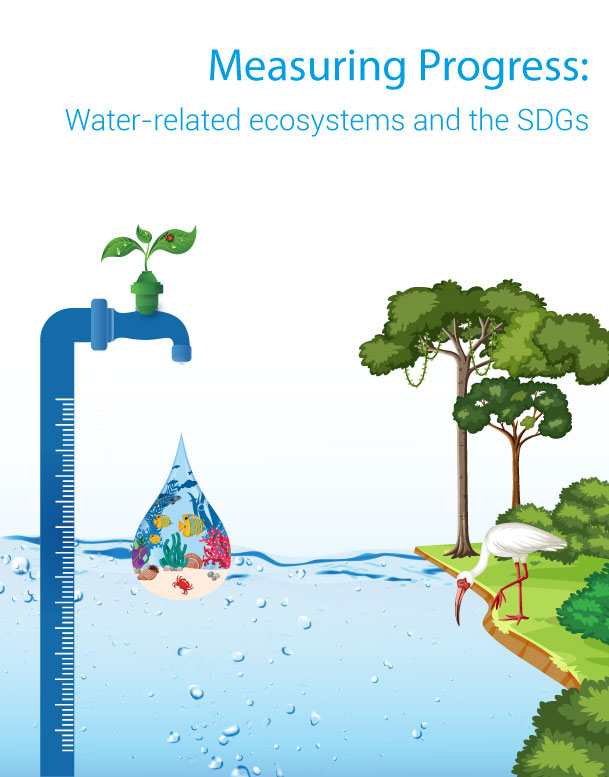


Copyright © 2023 United Nations Environment Programme
ISBN No: 978-92-807-4015-8
Job No: DEW/2513/NA
This publication may be reproduced in whole or in part and in any form for educational or non-profit services without special permission from the copyright holder, provided acknowledgement of the source is made. The United Nations Environment Programme would appreciate receiving a copy of any publication that uses this publication as a source.
No use of this publication may be made for resale or for any other commercial purpose whatsoever without prior permission in writing from the United Nations Environment Programme. Applications for such permission, with a statement of the purpose and extent of the reproduction, should be addressed to the Director, Communication Division, United Nations Environment Programme, unep-communication-director@un.org. The use of information from this document for publicity or advertising is not permitted. Trademark names and symbols are used in an editorial fashion with no intention on infringement of trademark or copyright laws.
Disclaimers
The designations employed and the presentation of the material in this publication do not imply the expression of any opinion whatsoever on the part of the United Nations Environment Programme concerning the legal status of any country, territory, city or area or of its authorities, or concerning delimitation of its frontiers or boundaries.
The views expressed do not necessarily represent the decision or the stated policy of the United Nations Environment Programme, nor does citing of trade names or commercial processes constitute endorsement. Authors serve in their personal capacities, the opinions expressed in this report may not reflect the opinions of their host institutions. Authors are not necessarily in agreement with every detail of this report.
Recommended citation: “United Nations Environment Programme (2023). Measuring Progress: Water-related ecosystems and the SDGs. Nairobi.”
Layout: UNON Publishing Services Section
Project Manager: Therese El Gemayel, Early Warning and Assessment Division, UNEP
The drafting was guided by an Expert Group chaired by Dr. Erica Gaddis, University of Utah.
UNEP overall coordination: Therese El Gemayel, Ludgarde Coppens and Brennan Van Dyke from the UNEP Early Warning and Assessment Division under the leadership of Jian Liu, Director of the Early Warning and Assessment Division.
UNEP publication support team: Angeline Djampou (library); Dany Ghafari (data processing); Jinita Dodhia (UNON, design and layout); Karl Scheifinger (drafting, data visualization, peer-review); Moses Kiget (maps development); Ralf Heidrich, (drafting, peer review coordination).
Scientific editing: Strategic Agenda
Financial support from the European Union to produce this report is gratefully acknowledged.
The 17 Sustainable Development Goals (SDGs) and 169 targets of the universal 2030 Agenda offer a blueprint for a sustainable and resilient future, where responsible management of our planet’s finite resources can create a brighter tomorrow for future generations. Global crises and conflicts, including the COVID-19 pandemic, the war in Ukraine, exacerbating food, energy, humanitarian and refugee crises, and a full-fledged climate emergency make it ever more important to redouble our efforts to implement this blueprint for building back a better world. Today at the half-way point, the latest available data and estimates for 92 environment relevant SDG indicators tell us that the world is not on track to achieve the environmental dimension of the SDGs by 2030. However, there is some positive news. Global data availability increased to 59 per cent in 2022, from 34 per cent in 2018 and 42 per cent in 2020. And although only 38 per cent of the environment-related indicators indicate environmental improvement, this is a solid improvement compared to only 28 per cent in 2020. Moreover, indicators of some Goals showed strong positive trends, including SDG 9 on infrastructure, SDG 7 on energy, and SDG 6 on freshwater. The integrated and indivisible nature of the SDGs reflect the interlinked nature of land- and water-based ecosystems, and the rich biodiversity they support, which provides food, clean water and air, and raw materials that fuel economic growth, leading to prosperity and human well-being. Achieving the SDGs, therefore, requires an integrated approach that recognizes how these challenges—and their solutions—are interrelated. The third edition of the Measuring Progress report focuses on statistical methods to understand these interlinkages through the prism of water ecosystems and the SDGs. In so doing, it provides insight into how freshwater- and marine-related ecosystems are impacted by various drivers, pressures, and actions, through use of statistical analysis. We hope that this report will encourage governments to strengthen further their statistical capacity in relation to the environment, incite further work on developing disaggregated and ecosystem-relevant data and on promoting use of non-traditional data sources like big data and citizen science. The all-sectoral approach encouraged by the SDGs, which Measuring Progress systematically explores would reinforce synergies as much as minimize trade-offs for a more holistic realization of the 2030 Agenda. With every action we take or investment we make in a sustainable future, we inch closer to the world we all want to see. With unwavering hope and determination, let us continue to strive towards realizing the 2030 Agenda.
Jian Liu Director, Early Warning and Assessment Division